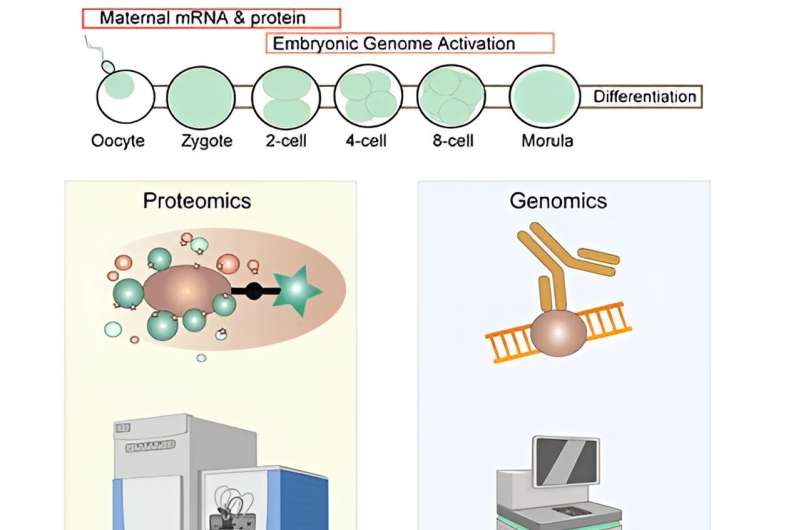This article has been reviewed according to Science X's editorial process and policies. Editors have highlighted the following attributes while ensuring the content's credibility:
fact-checked
peer-reviewed publication
trusted source
proofread
Decoding the molecular networks of early human development

New international research shines a light on the role of transcription factors during early embryonic development. Transcription factors are proteins that are critical for gene regulation. The study unveiled more than 1,000 protein–protein interactions, particularly spotlighting the previously underappreciated paired-like homeobox (PRDL) family of transcription factors that are active only in early embryonic stages.
The research is published in EMBO Reports.
New findings are key to understanding embryonic genome activation (EGA), a vital process in early development. The research paves the way for new investigations into early embryogenesis at the molecular level, with the potential to advance treatments for developmental disorders and enhance regenerative medicine.
The study also recasts homeobox gene TPRX2 that encodes DNA-binding proteins. TPRX2 is thought to be inactive as a pseudogene, as an essential transcriptional activator in these initial phases of development.
The study also gained deeper insights into the genomic binding patterns of these transcription factors. The study revealed crucial aspects of how these proteins interact with the genome, playing a pivotal role in chromatin modification and epigenetic regulation during early embryonic development.
Beyond enhancing our fundamental comprehension of human biology, this study paves the way for investigating developmental diseases.
"We've constructed a comprehensive map of crucial protein interactions, marking a significant advancement in developmental biology and medicine. Knowing the key regulators and their association with each other's and with DNA paves way on understanding the critical early steps of human development. Still, comprehensive understanding of these processes will require further extensive research," says Dr. Markku Varjosalo from the University of Helsinki.
More information: Lisa Gawriyski et al, Interaction network of human early embryonic transcription factors, EMBO Reports (2024). DOI: 10.1038/s44319-024-00074-0
Journal information: EMBO Reports
Provided by University of Helsinki





















